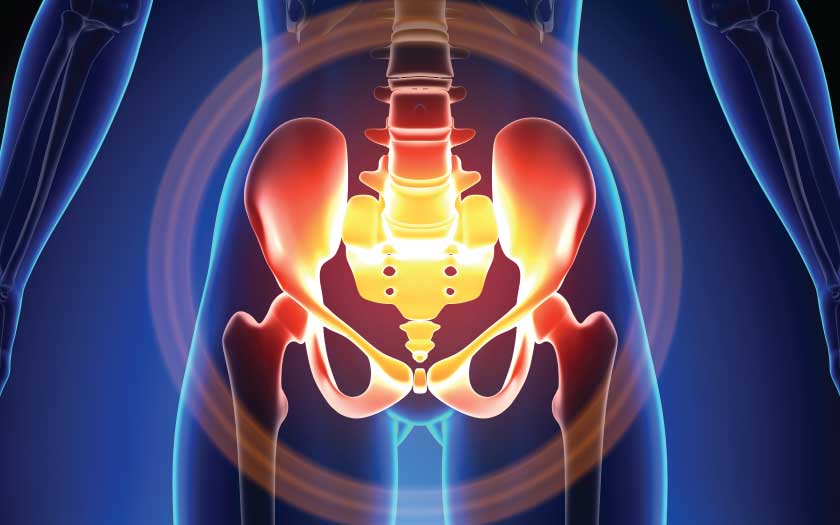Women are not all the same – and when we hear or say things like this, it may be about a whole lot of things varying from her size to her opinions, or even her looks, character, etc.
However, there is another feature that divides them into separate groups, and that is the shape of their pelvis. So, the question arises that if this means anything, especially when it comes to giving birth?
Well, it’s said that around pelvic brim and short, blunt ischial spines, is the most ideal for giving birth. This is known as a ‘gynaecoid’ pelvis and women who have this kind of pelvic shape may experience the least difficulties when giving birth, provided the fetus is a normal size and the birth canal has no abnormal tissue growth that may cause an obstruction.
As the evolution of human species will have it, there are now a few variations in pelvis shapes, but not all are in favour of problem-free child birthing. A couple of them may be the cause of issues that come up during labour and delivery. For example, a narrow pelvis can make it difficult for the baby to pass through the pelvic canal. You may be wondering too, is this a natural inborn thing, or can it be avoided. A deficiency of important minerals like iodine in the diet during childhood may result in this kind of abnormal development of the pelvic bones. Stunting and growth disorder due to malnutrition and/or infectious diseases can also result in a narrow pelvis in some women.
Get to know more about the different pelvis shape of women today
When it comes to body shape and size, as mentioned earlier, women are generally unique from one another, with lots of variations in between them. Unbeknownst to many though, women may also have different pelvis shape from one another. The following are the four main pelvis shapes.
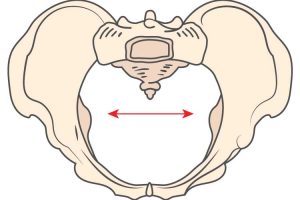
It has an almost round brim and will permit the passage of an average-sized baby with the least amount of trauma to the mother and baby in normal circumstances. The pelvic cavity (the inside of the pelvis) is usually shallow, with straight sidewalls and with the ischial spines that are not so prominent. This pelvis shape causes almost no issues as the baby passes through during childbirth.
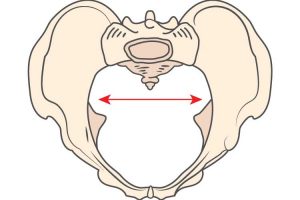
It has an oval brim and a slightly narrow pelvic cavity. The outlet is large, although some of the other diameters may be reduced. If the baby engages in the pelvis in an anterior position, labour would be expected to be straightforward in most cases.
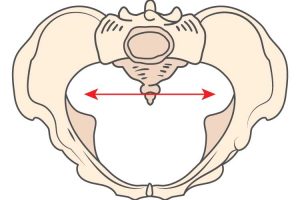
It has a heart-shaped brim and is quite narrow in front. This type of pelvis is likely to occur in tall women with narrow hips. African women are known to have such pelvis shapes. The pelvic cavity and outlet are often narrow, straight and long, while the ischial spines are prominent.
Women with this shape pelvis have a high chance of having to go through longer labours. Being less sedentary during labour might help. Giving birth in a squatting position may be the best choice for women with the Android shape pelvis.
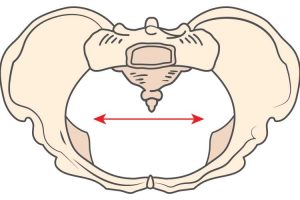
The Platypelloid pelvis has a kidney-shaped brim and the pelvic cavity is usually shallow and maybe narrow in the anteroposterior (front to back) diameter. The outlet is usually roomy. During labour the baby may have difficulty entering the pelvis, but once in, there should be no further difficulty.
Only birthing will tell
Many women are concerned that their pelvic capacity may be limited and that they will, therefore, have difficulty in giving birth. The true capacity of the pelvis will only be realised during labour. Only the forces created by the mother and baby during birth will allow the pelvis to open to its full potential. This may take some time, but it is the only true way of exploring the “fit” between the mother and baby during birth.
Then and now
The ease of which childbirth was accomplished in the past and also in surviving indigenous tribes stands in stark contrast to the phenomenal rate of birth interventions and cesarean births that take place now in our modern civilization. Could the radical changes in diets from the time of our ancestors till now be responsible for inhibiting the full and natural development of a healthy, well-shaped pelvic brim? It’s hard to say, but somehow, there have been changes in the physical development of the female body, characterized by the narrowing of the hips in many young girls and women today. The phenomena introduce an entirely new issue in our modern civilization, where the number of women who give birth naturally without issues seems to be getting less and less.
Generally speaking
In general, a gynecoid-shaped pelvis tends to facilitate vaginal birth the easiest. A gynecoid pelvis is very wide and shallow and it tends to cradle a baby comfortably. Additionally, it has an oval outlet and a wide arch that makes childbirth easier. On the other hand, the android pelvis tends to be deep and narrow, which makes it more difficult for a baby to exit. A platypelloid-shaped pelvis is typically narrow and small, so it presents the most challenges as far as vaginal deliveries are concerned. The anthropoid looks like a cross between the platypelloid and the android, and it’s kind of shaped like a heart, which can also present problems when it comes to vaginal childbirth.
Did you know?
Many indigenous groups prepared young girls for motherhood by feeding them special foods throughout their childhood and teenage years. An old Chimu culture on the coast of Peru had young women of childbearing age on special diets which included liberal amounts of fat-soluble vitamins (A, D, E, K) and a solid supply of nutrients from a diet consisting entirely of whole and carefully cultivated foods. Special foods fed to young girls include fish eggs, butter, cheese, milk and cream from grass-fed cows, organs of land animals, insects, and seafoods that include at least some of the organs and the heads.
Labor “Lubrication Formula”
1-2 raw organic eggs
2-4 ounces raw butter
1-2 tablespoons lemon juice
1-2 teaspoons unheated honey
All ingredients should be room temperature. Warm all ingredients in a jar with the lid on immersed in a bowl of mildly hot water for 5 minutes. Blend on medium speed for 10 seconds. The formula is said to be most effective when consumed with, or shortly after, a meat meal. Drinking this daily for three weeks before the baby is due is believed to help ease natural childbirth and prevent tearing of tissue during the birth. Provided you have no issues with the ingredients and are not allergic to any of them, we say, why not give it a try and see if it works?


